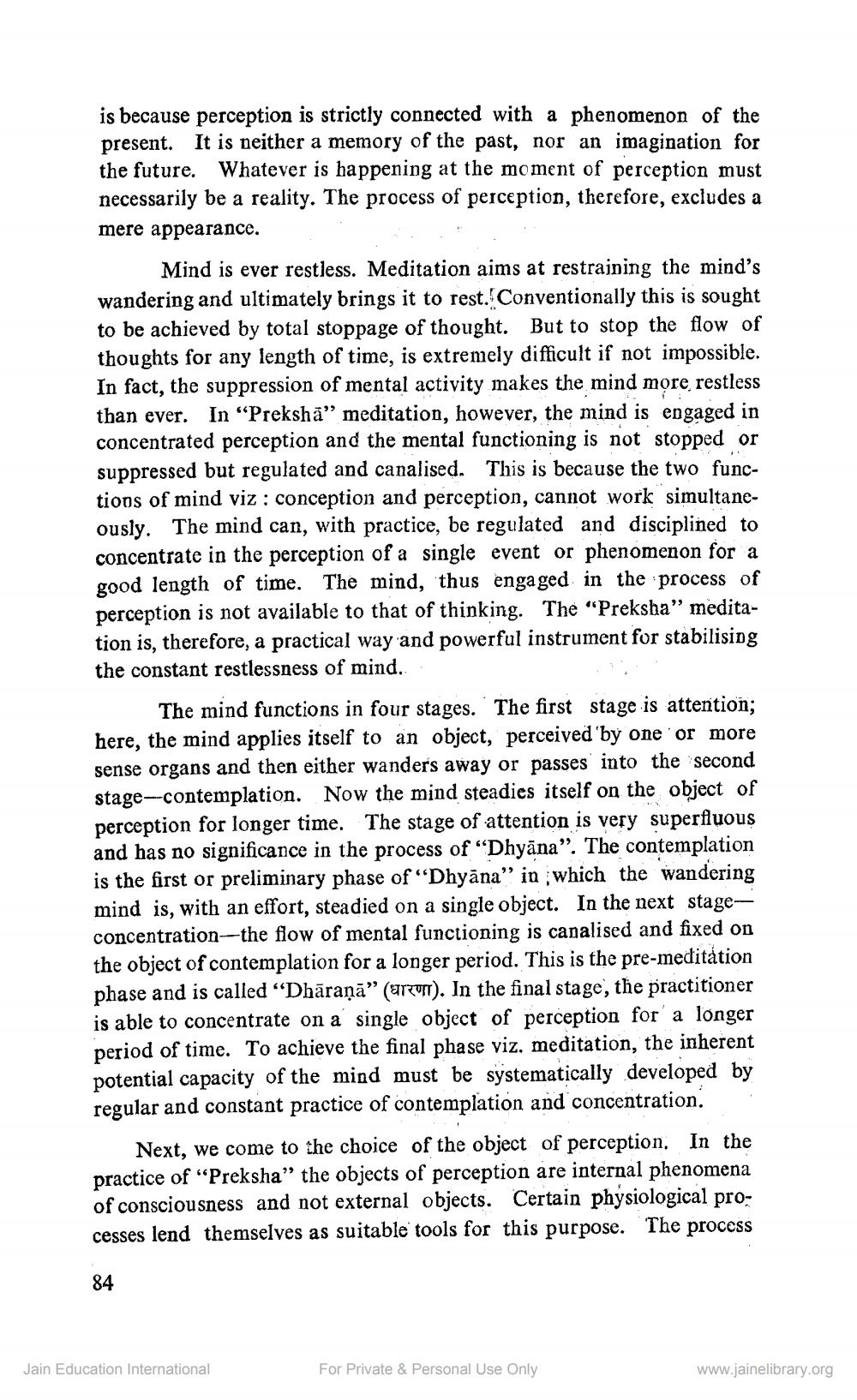________________
is because perception is strictly connected with a phenomenon of the present. It is neither a memory of the past, nor an imagination for the future. Whatever is happening at the moment of perception must necessarily be a reality. The process of perception, therefore, excludes a mere appearance.
Mind is ever restless. Meditation aims at restraining the mind's wandering and ultimately brings it to rest.Conventionally this is sought to be achieved by total stoppage of thought. But to stop the flow of thoughts for any length of time, is extremely difficult if not impossible. In fact, the suppression of mental activity makes the mind more restless than ever. In "Prekshā” meditation, however, the mind is engaged in concentrated perception and the mental functioning is not stopped or suppressed but regulated and canalised. This is because the two functions of mind viz : conception and perception, cannot work simultaneously. The mind can, with practice, be regulated and disciplined to concentrate in the perception of a single event or phenomenon for a good length of time. The mind, thus engaged in the process of perception is not available to that of thinking. The "Preksha” meditation is, therefore, a practical way and powerful instrument for stabilising the constant restlessness of mind.
The mind functions in four stages. The first stage is attention; here, the mind applies itself to an object, perceived by one or more sense organs and then either wanders away or passes into the second stage--contemplation. Now the mind steadies itself on the object of perception for longer time. The stage of attention is very superfluous and has no significance in the process of "Dhyāna". The contem is the first or preliminary phase of "Dhyāna" in which the wandering mind is, with an effort, steadied on a single object. In the next stageconcentration--the flow of mental functioning is canalised and fixed on the object of contemplation for a longer period. This is the pre-meditation phase and is called "Dhāraņā” (arcut). In the final stage, the practitioner is able to concentrate on a single object of perception for a longer period of time. To achieve the final phase viz. meditation, the inherent potential capacity of the mind must be systematically developed by regular and constant practice of contemplation and concentration.
Next, we come to the choice of the object of perception. In the practice of “Preksha” the objects of perception are internal phenomena of consciousness and not external objects. Certain physiological processes lend themselves as suitable tools for this purpose. The process
84
Jain Education International
For Private & Personal Use Only
www.jainelibrary.org




